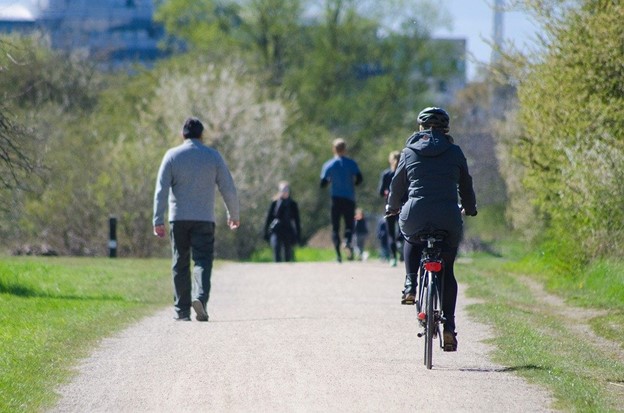The Latest on Fitness and COVID-19
A year after the first case of COVID-19 was reported in the United States, we still have questions about how to protect ourselves and recover from the virus. Arthur L. Weltman presents the latest studies on exercise and COVID-19. Weltman is a professor in the Department of Kinesiology in the School of Education and Human Development; and a professor in the Department of Medicine and director of the Exercise Physiology Core Laboratory in the School of Medicine at the University of Virginia.
We welcome your comments below!
THE LATEST ON FITNESS AND COVID-19
As an exercise physiologist, I’ve been getting a lot of questions about physical activity, exercise, fitness, and outcomes related to COVID-19.
One common question is: Will increased levels of exercise/fitness provide protection from contracting or the symptoms associated with COVID-19?
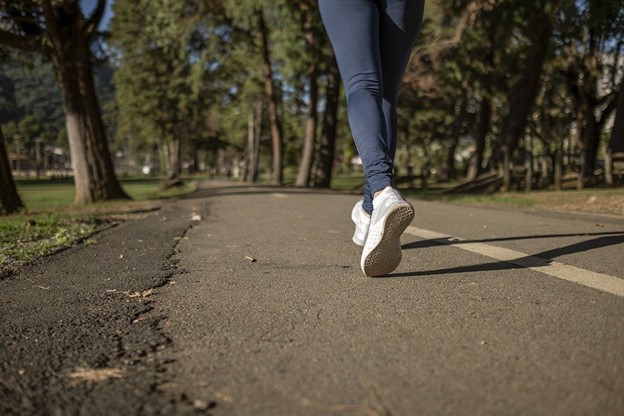 There is considerable science that supports the benefits of regular exercise and increased fitness, including lower all-cause mortality and reduced risk of developing heart disease, stroke, Type 2 diabetes, cancer, obesity, hypertension, and osteoporosis. Regular exercise also improves quality of life, sleep quality, and brain health (including lowering rates of depression, anxiety, dementia, and Alzheimer’s disease). However, as severe acute respiratory syndrome coronavirus 2 (SARS-CoV-2) wasn’t identified until December 2019, there is very little science related to the effects of exercise/fitness on COVID-19 or the impact of contracting COVID-19 on fitness levels and exercise capabilities.
There is considerable science that supports the benefits of regular exercise and increased fitness, including lower all-cause mortality and reduced risk of developing heart disease, stroke, Type 2 diabetes, cancer, obesity, hypertension, and osteoporosis. Regular exercise also improves quality of life, sleep quality, and brain health (including lowering rates of depression, anxiety, dementia, and Alzheimer’s disease). However, as severe acute respiratory syndrome coronavirus 2 (SARS-CoV-2) wasn’t identified until December 2019, there is very little science related to the effects of exercise/fitness on COVID-19 or the impact of contracting COVID-19 on fitness levels and exercise capabilities.
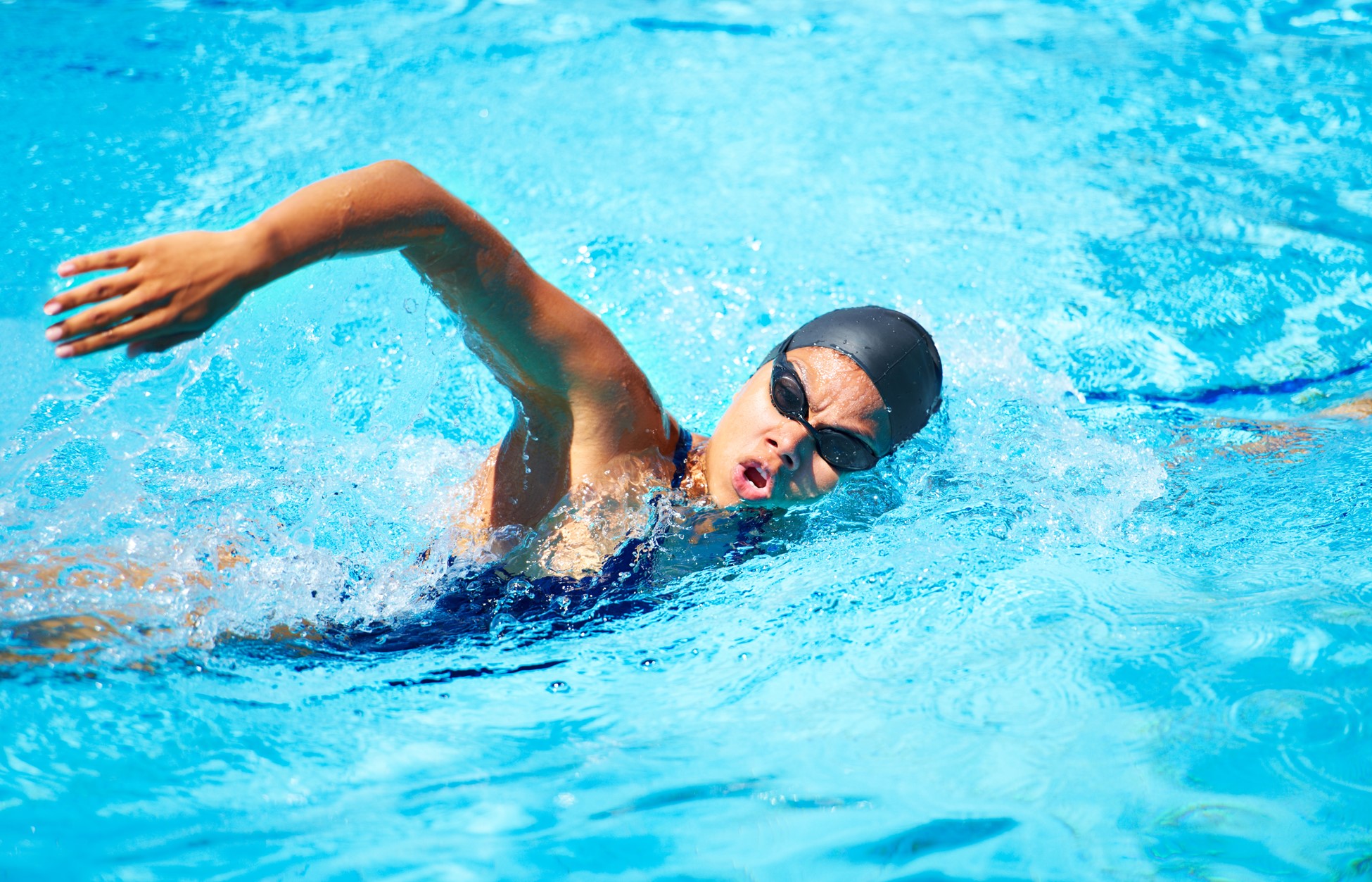
It appears that the progression of COVID-19 is largely dependent on the immune response triggered by the infection1. Being physically active or engaging in exercise training has potent effects on the immune system, including improving immune response to vaccination, lowering chronic low-grade inflammation, improving immune markers in several disease states, and reducing the risk, duration, and severity of viral infections2,3. As exercise favorably impacts immune markers associated with many diseases, it has been suggested that those individuals with high levels of fitness will have some degree of immune protection should they contact SARS-CoV-21.
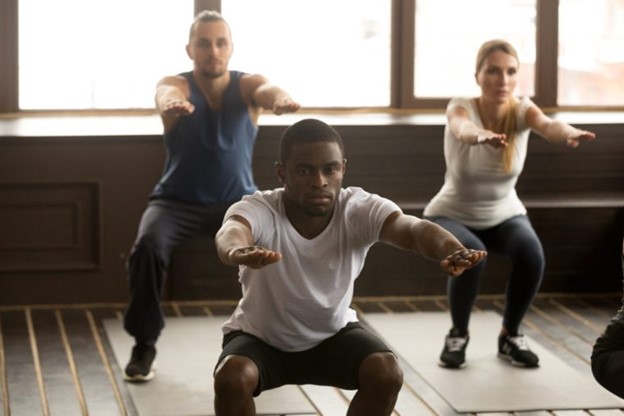
What does the science say?
One recent study supports this speculation4. Scientists from Henry Ford Hospital in Detroit identified 18,188 patients who completed a clinically indicated exercise stress test between January 1, 2016, and February 29, 2020. Between February 29 and May 30, 1,181 of these patients also had a SARS-CoV-2 test 2020 (n=246 positive, n=925 negative). This diverse sample of 246 COVID-19 positive patients (42% male, 75% black) had various clinical indications for stress testing that placed them at higher risk for COVID-19 complications. Here are the main findings:
- For the 1,181 patients who had a SARS-CoV-2 test, there was no association between fitness level and the likelihood of contracting COVID-19, suggesting that fitness in this high-risk group of patients does not protect them from becoming infected.
- For those testing positive, there was a strong inverse relationship between cardiorespiratory fitness and risk of hospitalization. Every 1 unit increase in fitness (measured using METS) was associated with a 13% lower odds for hospitalization.
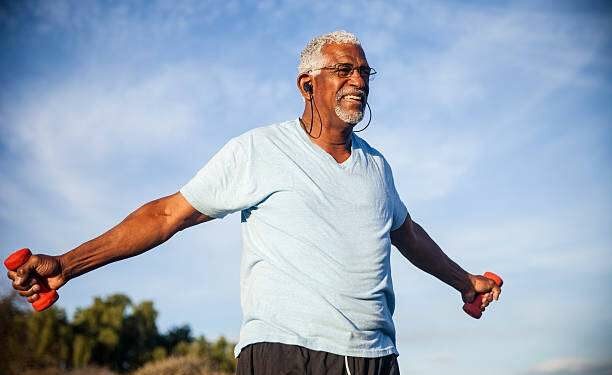
A second recent study examined the effects of contracting COVID-19 on strength and cardiorespiratory fitness in young adult (median age 21 years) Swiss Armed Forces recruits (predominantly male)5. Investigators compared cardiorespiratory fitness (VO2 max) and strength changes in 199 recruits (54 SARS-CoV-2 naive/negative, 77 positive with no COVID-19 symptoms, 68 positive convalescents recovering from COVID-19 symptoms). Here are the main findings:
- There were no differences in fitness levels between those who tested positive or negative for COVID-19 in this young, low-risk group of recruits.
- Testing positive, independent of symptoms, did not affect muscular strength.
- For those who tested positive without symptoms, there was no impact on cardiorespiratory fitness.
- In those with symptomatic COVID-19, there was a significant reduction in VO2 max for one to two months, with 19% showing a decrease in VO2max of 10% or more.
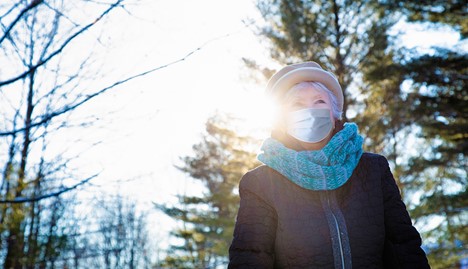
Here are three take-home messages:
- As important as regular physical activity and exercise is, elevated fitness does not protect you from contracting COVID-19. Keep exercising and continue to wear protective face coverings, socially distance, wash your hands frequently, and adhere to CDC guidelines to lower risk of infection.
- As recent data support the important association between cardiorespiratory fitness and lower hospitalization risk due to COVID-19, if you are physically active or a regular exerciser, keep it up. If you are not active or exercising regularly, consider ways to increase your physical activity/exercise patterns.
- If you test positive for COVID-19 and are asymptomatic, there does not appear to be any deleterious effects on cardiorespiratory fitness or strength. If you test positive for COVID-19 and have symptoms, cardiorespiratory fitness will likely decrease and return to exercise may need to be prescribed in a manner similar to recovery from other illnesses/injuries associated with deconditioning.
References
- Zbinden-Foncea H, Francaux M, Deldicque L, Hawley JA. Does high cardiorespiratory fitness confer some protection against proinflammatory responses after infection by SARS-CoV-2? Obesity 2020; 28:1378-1381
- Simpson RJ, Campbell JP, Gleeson M, et al. Can exercise affect immune function to increase susceptibility to infection? Exerc Immunol Rev 2020; 26:8-22.
- Laddu DR, Lavie CJ, Phillips SA, Arena R. Physical activity for immunity protection: inoculating populations with healthy living medicine in preparation for the next pandemic [published online April 9, 2020]. Prog Cardiovasc Dis
- Brawner CA, Ehrman JK, Bole S et al. Inverse relationship of maximal exercise capacity to hospitalization secondary to coronavirus disease 2019. Mayo Clin Proc 2021; 96:32-39.
- Crameri GAG, Bielecki M, Zust R et al. Reduced maximal aerobic capacity after COVID-19 in young adult recruits, Switzerland, May 2020. Euro Surveill 2020; 25(36): pii=2001542. https://doi.org/10.2807/1560-7917.ES.2020.25.36.2001542
Continue your education with Lifetime Learning’s online resources available to alumni, parents, and friends.
The Thoughts From the Lawn (TFTL) blog is published by Lifetime Learning at the University of Virginia’s (UVA) Office of Engagement. This platform features UVA faculty and staff articles for the benefit of UVA’s alumni, parents, and friends. The views expressed in TFTL blog posts reflect the views of the authors and not those of Lifetime Learning. Lifetime Learning reviews the content and links in each article before publication; however, we take no responsibility for inaccurate information and/or links that lead to post-publication, unintended sites. Lifetime Learning is not responsible and will not be held liable for blog comments and reserves the right to remove malicious or mean-spirited responses.
- Testing, Diagnosing, and Treating Primary Aldosteronism: A Leading Cause of Hard-to-Treat Hypertension
- Life at the Top: Climate Change in Utqiaġvik, Alaska
- The Only Thing We Have to Fear is Fear Itself
- UVA Club of Tidewater: Hoos at Harbor Park
- Virtual Admitted Student Celebrations
- UVA Club of Richmond: Hoos at The Diamond

